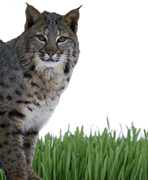H-FABP, Human, Monoclonal Antibody 66E2
- Supplier: Hycult Biotech
Product Description
- The monoclonal antibody 66E2 recognizes human heart fatty acid binding protein (H-FABP) of both natural and recombinant origing. The H-FABP protein is derived from the human FABP3 gene. FABPs are small intracellular proteins (~13-14 kDa) with a high degree of tissue specificity that bind long chain fatty acids. They are abundantly present in various cell types and play an important role in the intracellular utilization of fatty acids, transport and metabolism. There are at least nine distinct types of FABP, each showing a specific pattern of tissue expression. Due to its small size, FABP leaks rapidly out of ischemically damaged necrotic cells leading to a rise in serum levels. Ischemically damaged tissues are characterized histologically by absence (or low presence) of FABP facilitating recognition of such areas. H-FABP is localized in the heart, skeletal and smooth muscle, mammary epithelial cells, aorta, distal tubules of the kidney, lung, brain, placenta, and ovary. The monoclonal antibody 66E2 stains heart muscle cells and striated skeletal muscle cells in immunohistology. It can be used to detect ischemia areas of human heart. It is also useful as marker for brain damage. Furthermore, this antibody is useful for the purification of H-FABP.
- Applications: Immunoassays , Immunoprecipitation , Western Blot
Resources
Product Options
| Product Number | Description | Package Size | List Price (CAD) | ||
|---|---|---|---|---|---|
| HYBHM201620UG | H-FABP, Human, mAb 66E2, 20 µg | 20 µg |
CA$274.40
|
Add to Cart | |
| HYBHM2016100UG | H-FABP, Human, mAb 66E2, 100 µg | 100 µg |
CA$752.00
|
Add to Cart | |
| HYBHM2016500UG | H-FABP, Human, mAb 66E2, 500 µg | 500 µg |
CA$2,158.00
|
Add to Cart |
List Prices are displayed.
Please register or log-in to the site to view your organization’s prices, or please add the products to your cart and click the “Request a Quote” button to receive price and availability information (include quantities for each product and indicate either a one-time purchase or your annual usage.)



